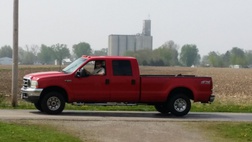wlkelley3 wrote:
I don't fully understand how wood is the worse option. Understand attachment is critical with wood but if the shelf was built by the builder during construction they would use wood support and the proper size nails. Agree that bolts would be best and would do it that way myself. Or at least lag bolts. I look at it as if the shelf is made of 2X4's than 2X4's would work as supports. For some reason, I don't care much for the chain or strap method although I know they will hold. Threaded rod would work best with a piece of metal or fender washer to distribute the weight. I think the size of the washer under the nut would be the main load bearing consideration with this method, pull through being what you want to prevent. Personally I do prefer to work with metal as I understand it more than wood but wood has been used for this for longer than any of us has been around.
It's not a bad option in of itself. It can be done well. It is a bad option because it will likely lead to bad decisions of attachment.
If I am understanding correctly, he is building a shelf that is approximately 54 SF and intends to load it with car parts.
It wouldn't be hard to put nearly 100 lbs per SF of load on it.
5400 lbs. Twice the weight of some of our cars. Too much to hang from a few nails.
The problem is that the wood "hangers" are in tension, and the nails (or screws) would likely be in shear. This is not a standard construction problem, and if a builder did it, he would probably make the same mistake (because builders are really good at understanding loads in compression, but suck at understanding tension).
Chain, cable, and threaded rod are all best used under tension. Wood can be used in tension (like in a truss), but it's attachments become super critical.
I didn't say wood was the worst option. I said it was his worst option, because I was getting a sense that the original poster was (just a little) limited in his construction knowledge.
Chain and cable would work, but it is easy to misuse cable clamps, kink cable, wrap chain around a truss web that puts an inappropriate stress on the truss, etc. Too many variables.
Using the threaded rod (as described) will pretty much guarantee a solid storage area, without concerns about nail size, splitting from lag screws, over-nailing, under-nailing, nailing at an inappropriate angle, fastener's resistance to shear, dried out material, etc.
Now, that's a whole lot of info nobody asked for. 
I'm trying to make it easy, and safe. 






































